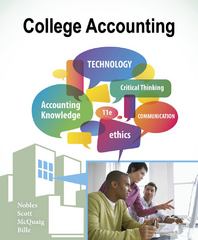Question
Background Steve's Shoe Makers Inc. (SSM), a company that is publicly traded on the New York Stock Exchange, manufactures and distributes high-performance athletic footwear and
Background
Steve's Shoe Makers Inc. (SSM), a company that is publicly traded on the New York
Stock Exchange, manufactures and distributes high-performance athletic footwear and
apparel. Established in Philadelphia in 2000 as a small, family-owned business, SSM has
expanded to include a wholly owned subsidiary, Steve's Shoes LLC. SSM's corporate
management is based in Philadelphia, and the manufacturing and distribution plants are
located in Houston and Los Angeles.
You have been hired as SSM's external auditor and have been assigned to test SSM's
related parties and its relationships and transactions with related parties in accordance
with PCAOB AS 2410.
You have spoken with SSM's CEO, Dain Blanton, who believes that the processes and
controls in place at SSM would result in the identification of any related-party
relationship that would require further investigation or possible disclosure in the financial
statements. Further, he has stated that the company does not have any related-party
events or transactions that would need to be disclosed in the current-year annual financial
statements in accordance with ASC 850.
See the appendix below for SSM's organizational structure.
Management's Processes and Controls
To understand management's processes and controls over related parties and its
relationships and transactions with them, you obtain SSM's relevant process flow
narrative from management, which states the following:
Before hiring a new employee, the human resources manager performs a
background check. Employees hired for management positions must disclose their
significant ownership interests. SSM's legal department maintains a listing of
these disclosures ("related-parties listing") and periodically checks the disclosed
relationships against SSM's vendor and customer master file. Annually, before
SSM files its Form 10-K, management signs representations indicating that to the
best of its knowledge, SSM did not enter into any related-party transactions that
were not disclosed in the financial statements. Management also discloses any
changes in its significant equity ownership or investments at this time. A review
of the representations is performed by the legal department, the related-parties
listing is updated for any new related parties identified, and the records are
maintained in a locked room.
Risks of Material Misstatement
As a result of the risk-assessment procedures performed, you have determined that the
risks of material misstatement listed below apply to the audit of SSM. You have also
determined that none of the identified and assessed risks of material misstatement aresignificant risks. (Note that there are additional risks of material misstatement that may
be identified regarding related parties and relationships and transactions with related
parties; however, this case study only focuses on the risks outlined below.)
R_RP_1: Related party relationships and/or transactions do not exist or are inaccurate.
R_RP_2: Related party relationships and/or transactions are incomplete.
R_RP_3: Related-party transactions are recorded for transactions that lack a business
purpose.
R_RP_4: The related party disclosure:
includes transactions that may not have occurred or are not accurate;
includes transactions that are not classified appropriately;
does not include transactions that have occurred;
R_RP_5: Related party transactions are disclosed as being at arms-length when they are
not recorded as such.
R_RP_6: The related-party disclosure does not sufficiently describe related-party
transactions in accordance with the applicable financial reporting framework.
Required
1-Are management's processes and controls over related parties and related-party
relationships and transactions sufficient? Why or why not?
2- What would be the implications on the audit if an undisclosed related-party
transaction was identified during the completion of audit testing?
Step by Step Solution
There are 3 Steps involved in it
Step: 1

Get Instant Access to Expert-Tailored Solutions
See step-by-step solutions with expert insights and AI powered tools for academic success
Step: 2

Step: 3

Ace Your Homework with AI
Get the answers you need in no time with our AI-driven, step-by-step assistance
Get Started


